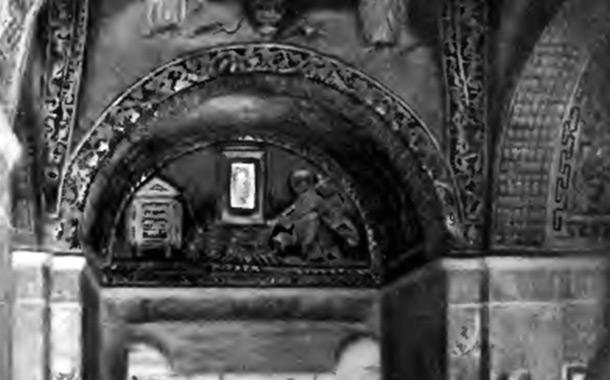<![CDATA[An ancient mausoleum has been discovered under the floors of St. Martin's Church in Eynsford, England. The discovery was made during renovation work being carried out on the 12th century church. The mausoleum contains the coffin of Alexander Pitcairn, the youngest son of John Pitcairn and Elizabeth Pitcairn. Alexander's body was placed in the church's mausoleum after he died in 1813. Renovation work has been put on hold until archaeologists complete their studies and ascertain that there are no other bodies to be uncovered. The discovery has drawn attention to the colourful and tragic history of the Pitcairn family, and revealed some intriguing mysteries. The presence of the mausoleum wasn't known to the locals. The discovery has excited the church, as well as members of the Farningham and Eynsford Local Historical Society (FELHS). According to Reverend Gary Owens, the mausoleum was discovered while excavating the floor. It appears that Alexander was a cricketer who played for Middlesex, Hampshire and Kent. He was also a lawyer at Grays Inn, one of London’s prestigious four Inns of Court. Since there is no Pitcairn in the parish registers, people have begun to speculate about what Alexander was doing in Eynsford, and how he came to be buried in a special vault in the church. Jan Wilkes, a member of the FELHS, adds that it is already known that Alexander's brother Robert was in the Royal Navy. He was serving as a midshipman on the HMS Swallow in 1767, when it lost contact with fellow ship HMS Dolphin while on a ‘round the world’ voyage. In 1770 Robert was declared ‘lost at sea’. While looking for land during this expedition, Robert spotted the territory that is now named after him - the Pitcairn Islands. The Pitcairn Islands are a group of four islands located in the Southern Pacific. They are the last British overseas territory in the Pacific Ocean. They would achieve fame in 1790 as the place where nine of the mutineers from the HMS Bounty burnt their ship, and decided to settle. Alexander's father, Major John Pitcairn, served in the Royal Marines. He lost his life during the Battle of Bunker Hill, a major engagement in the American Revolutionary War, fought on June 17th 1775. It was a key set piece in the Siege of Boston. The mausoleum has triggered the imaginations of the people of the village of Eynsford. Alexander Pitcairn came from an eventful family tree that ties him to the history of the American War of Independence, and the early explorations of the Pacific. How and why he came to be buried in this small town is a mystery that may never be solved, and one that is perhaps just as fascinating as the lives of his father and brother. Even more significant is the fact that the mausoleum was covered up. This was an extremely unusual practice, and one that raises even more questions. The renovation works currently taking place on the Norman church itself are believed to be the biggest that have taken place for centuries. They are intended to modernise the church and make it a useful resource for the local community. The discovery of the mausoleum has revealed to locals that this Norman church might be even more unique than they realised. ]]>
Ancient Mausoleum Found in Eynsford church
